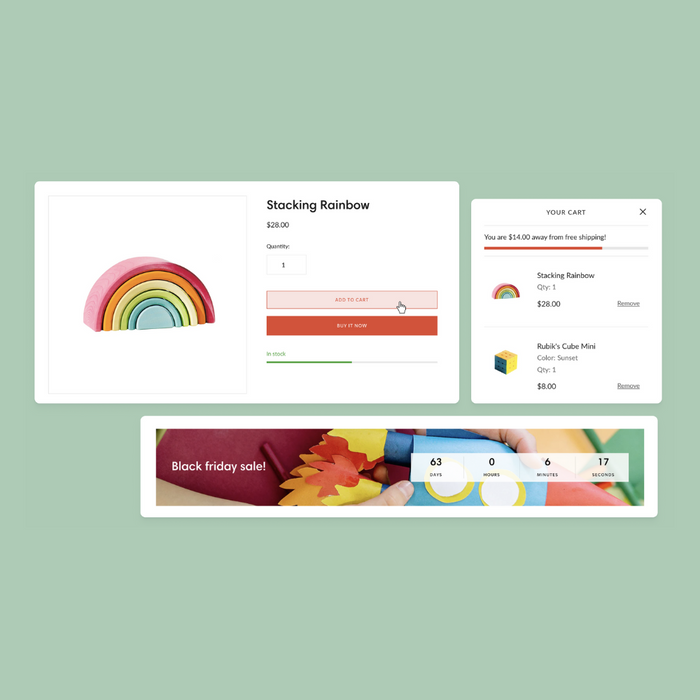State of the Union
-
 Uptime has joined WeCommerce, enriching Pixel Union’s suite of Shopify apps! Uptime launched just under 2 years ago with the noble goal to arm Shopify merchants with the power of automated store monitoring.Read now
Uptime has joined WeCommerce, enriching Pixel Union’s suite of Shopify apps! Uptime launched just under 2 years ago with the noble goal to arm Shopify merchants with the power of automated store monitoring.Read now -

Fun features, playful presets: Atlantic v17 unlocks the toybox
The journey of our theme, Atlantic, has been influenced by feedback from thousands of store owners, shaping its evolution into a refined and iconic theme. Today, we are thrilled to unveil Atlantic 17, the latest version equipped with advanced tools designed to amplify promotions, simplify navigation, and speed up conversions.Read now -

How to boost B2B sales on Shopify
Read nowWhether you’re a supplier, wholesaler, or manufacturer, your B2B brand (business-to-business) can thrive on Shopify. No ecommerce platform is more equipped for this business model when you take a look at Shopify’s many resources, apps, and tools.
As a B2B brand on Shopify, you’re not alone. That means you’ll need to get the edge over your competitors.
Here's how: Enhance your storefront with these powerful tools to reduce customer effort, get bigger orders, and simplify repeat purchases.
-

Top 3 reasons for an upgrade to Empire 7.0
Empire 7.0 introduces new features to level up your storefront and sell more. Enhance customer experience by using Product Compare and Inventory Status features. Also, you can offer products as Pre-Orders to generate hype and make sales before inventory becomes available.Read now -

New! Icons for TikTok, Snapchat, and more
Read nowWe’re excited to announce that icons for all of the most popular social media platforms now come ready to go in (almost) all of our Shopify themes! To access these new icons, update your theme using Theme Updater App. According...
-

9 Shopify theme features that every clothing store needs
In today’s competitive market, pretty images and marketing aren’t enough to set your clothing store apart.Read now -

Pixel Union Agency and Apps launch new brands
Pixel Union started in 2010 as a theme developer and, over time, added apps to their product roster as well as an agency team. Now, after many years as one big group, the apps and agency divisions are splitting off on their own paths.Read now -

Top 10 ecommerce design mistakes and how to avoid them
Read nowGreat ecommerce design isn't one-size-fits-all, which can make it hard to define, but you know it when you see it. The same is true for bad design: your shoppers might not be able to pinpoint what's wrong with the look...
-

Ratton Pantry: How a pandemic food shortage led to a successful online brand
Read nowDuring the height of the COVID-19 pandemic, siblings-in-law Victoria Kingford and Sean Hammett had a difficult time finding high-quality baking ingredients. As avid UK home bakers, they knew others in their local area were having the same problem. So, they...